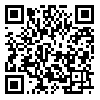Volume 8, Issue 3 (10-2017)
JAP 2017, 8(3): 67-83 |
Back to browse issues page
Download citation:
BibTeX | RIS | EndNote | Medlars | ProCite | Reference Manager | RefWorks
Send citation to:



BibTeX | RIS | EndNote | Medlars | ProCite | Reference Manager | RefWorks
Send citation to:
Hosseini S A. A labeling method of EEG signals for classification of different anesthesia states
. JAP 2017; 8 (3) :67-83
URL: http://jap.iums.ac.ir/article-1-5348-en.html
URL: http://jap.iums.ac.ir/article-1-5348-en.html
Mashhad Branch, Islamic Azad University , hosseyni@mshdiau.ac.ir
Abstract: (19028 Views)
Aims and background: This study develops a computational framework for the classification of different anesthesia states, including awake, moderate anesthesia, and general anesthesia, using electroencephalography (EEG) signals and peripheral parameters. Materials and Methods: The proposed method proposes data gathering; preprocessing; a new labeling process of EEG signal; appropriate selection of window length by genetic algorithm; feature extraction by Hjorth parameters, approximate entropy, Petrosian fractal dimension, Hurst exponent, largest Lyapunov exponent, Lempel-Ziv complexity, correlation dimension, and Daubechies wavelet coefficients; feature normalization; feature selection by non-negative sparse principal component analysis; and classification by radial basis function (RBF) neural network. Correct labeling process of EEG signals is performed by an expert opinion and also qualitative and quantitative analysis of the extracted parameters from peripheral nerve stimulator, pulse oximetry, blood pressure, and the time of drug injection. Findings: The results indicate that the proposed method would classify different anesthesia states including awake, moderate anesthesia, and general anesthesia, with the accuracy of 93.98%, 98.62, and 97.3, respectively. Therefore, the proposed method can classify different anesthesia states with the average accuracy of 97.3%. conclusion: Finally, the proposed method provided a good representation of the brain behavior in different anesthesia states.
Type of Study: Original |
Subject:
Anesthesia Monitoring
Received: 2017.08.25 | Accepted: 2017.10.21 | Published: 2017.11.24
Received: 2017.08.25 | Accepted: 2017.10.21 | Published: 2017.11.24
Send email to the article author
| Rights and permissions | |
 |
This work is licensed under a Creative Commons Attribution-NonCommercial 4.0 International License. |





